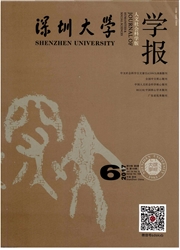

 中文摘要:
中文摘要:
色彩意象是一个民族色彩体系的重要组成部分,也是区别于其他色彩体系最显著的标志之一。色彩意象与民族心理有着密切联系,它涉及到一个国家的地理、历史、种族、宗教、文化、社会形态、生存方式等诸多因素,不同的民族有自己独特的色彩心理与色彩意象,形成不同的色彩文化。中国和日本基于不同的文化背景,其色彩意象既有相似点也存在差异。早在战国时期中国人就把"五色"与"五行"建立了联系,并发展为本土特色的哲学色彩论;而日本崇拜大自然的色彩观从古代一直延续到今天。探讨中、日色彩心理和色彩偏好的异同,分析中国色彩受众的心理语义,吸收日本色彩形象坐标的经验教训,可为构建中国色彩意象系统和动态的立体空间坐标提供有益参考。
 英文摘要:
英文摘要:
Color image is an important part of a nation's color system, and one of the most distinctive hallmarks which distinguishes its color system from that of others. Color image is closely related to national mentality. It involves a country's geography, history, ethnicity, religion, culture, social patterns, and way of life.Different nations have their own unique color mentality and image, and thus different color cultures. With different cultural backgrounds, China and Japan have both similarities and differences in color image. As early as in the Warring States period, Chinese people associated "wu se(five colors)" with "wu xing(five elements)",which later evolved into a philosophy of color with Chinese characteristics. While in Japan, the color conception which worships nature remains alive today. This paper explores the similarities and differences in color mentality and preference between China and Japan, analyzes Chinese audience's color mentality, and learn from Japan's color images. Hopefully, this study may provide a useful reference for China to build its own color image system and dynamic spatial coordinates.
 同期刊论文项目
同期刊论文项目
 同项目期刊论文
同项目期刊论文
 期刊信息
期刊信息
